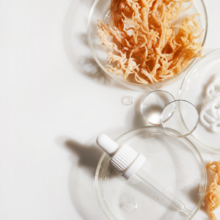Why You Should Eat More Chocolate: Chocolate Boosts Your Metabolism
- Published: Tuesday, May 19th 2015
- in Nutrition
 The fourth healthy and unexpected reason to eat more chocolate? It cranks your metabolism
The fourth healthy and unexpected reason to eat more chocolate? It cranks your metabolism
First, let’s just make sure you’re tethered to reality. Chocolate, even the high-cocoa kind that you should be eating, will not make you fit. Sorry. You can’t poke down a bar of 70 percent dark chocolate and be totally ripped by morning. It’s just not going to happen. Instead, it’ll do for your fitness exactly what it does for your weight. High-cocoa chocolate creates the conditions inside your body that help you succeed. It’s your little helper, so you can get from where you are now to where you want to be—whether that goal is in weight loss or fitness.
How Chocolate Boosts Your Energy
Chocolate can increase your energy levels through the specific kind of antioxidants most abundant in cocoa: catechins and epicatechins. These antioxidants do two very important things to increase your muscles’ ability to create more energy for you to use. First, they increase the amount of nutrients your muscles have to work with, and then they further increase the micromolecular organelles that produce the energy itself.
To nourish and power your muscles in the first place, you have to get the nutrients into the muscular fibers from oxygenated blood. So, if you need more energy, you’ll need more nutrients, and you’ll need more capillaries to infiltrate the tissue. That’s the first need.
The second requirement is to be able to turn those extra nutrients into extra energy. For this, you need the mitochondria, which are tiny organelles. The mighty mitochondria organelles are the power plants that make the energy that make you move. Without them, you don’t move. And, if you are feeling lethargic and don’t want to do anything but veg out on the couch and binge watch the Sopranos, you can blame your mitochondria. It won’t do you any good, but it will certainly make you feel better to blame something that you can’t see or touch, and most people don’t even know what they are.
“Hey, what are you doing?”
“Just being a slug on the couch. It’s my mitochondria.”
“Oh, that sounds awful. What is it?”
“Mitochondrial malaise, you know, a medical condition with tons of syllables.”
You’ll be so impressive, right up until the moment your friends discover Google.
Chocolate may be what you turn to during your attack of mitochondrial malaise, but it also happens to be a solution for that very same affliction. Not chocolate per se, but the cocoa in chocolate, which has the highest levels of epicatechins. That’s because sustained cocoa consumption produces a happy downstream effect on top of the increased capillary formation in your muscles: new mitochondria formation.
In other words, the epicatechins you get when you eat high-cocoa chocolate do both things that you need in order to increase your energy. This is definitely good news for athletes, and also for anyone who wants to eat chocolate, and lose weight doing it.
You actually get more of a boost when you combine activity with high-cocoa chocolate consumption. The number of capillaries to your muscles increases (including your heart muscle, by the way), and the number of new mitochondria increases when those muscles are activated.
How many more? According to one study, cocoa epicatechins alone produce a 30 percent increase in fatigue resistance and a 30 percent increase in new blood supply. However, the increase in energy that you get from combining cocoa epicatechins with exercise amounts to a boost of 50 percent! In layman’s terms, that’s a huge increase in your ability to complete your exercises and to go through a normal day with increased energy.
The outcome of this is simple: fatigue resistance. And think about what this would mean for you in the context of your normal day. How much would a little fatigue resistance be worth to you? For example, if someone had a pill that could reduce fatigue without also killing your liver, causing you to break out into boils, or sending you into convulsions (“Don’t take it if you’re pregnant or operate heavy machinery; ask your doctor if convulsions are right for you”), you’d buy that. This side effect – fatigue resistance – comes from the combination of high-cocoa chocolate and moderate activity.
How long will it take for these changes to occur? It took two weeks for experimental animals to see a 30 percent increase in fatigue resistance. In a separate study, it took four weeks to see increased capillaries and mitochondria. And subjects with type 2 diabetes who were administered 100 milligrams of epicatechins per day for three months showed a significant increase in mitochondria. In fact, before taking the epicatechins, their energy-producing mitochondria had all but withered away. It was only with the addition of the high-cocoa chocolate that their mitochondria were restored.
Does that mean you have to have chocolate every day for three months before you see improvements in your energy levels? (Okay, worse things could happen.) No, you don’t have to wait! You’ll see an increase in energy within those first few weeks, because the increased capillaries and mitochondria are progressive and develop over time.



